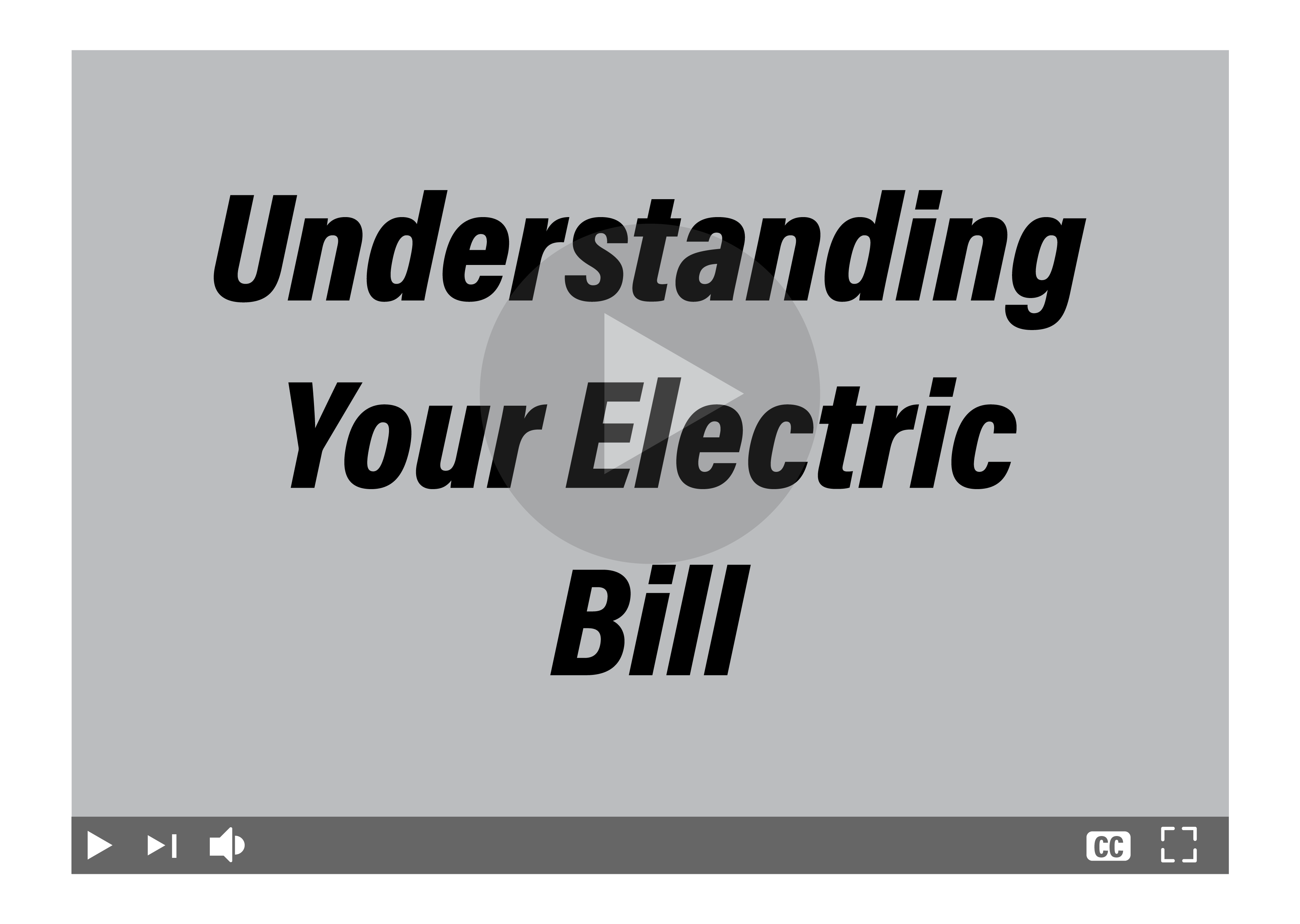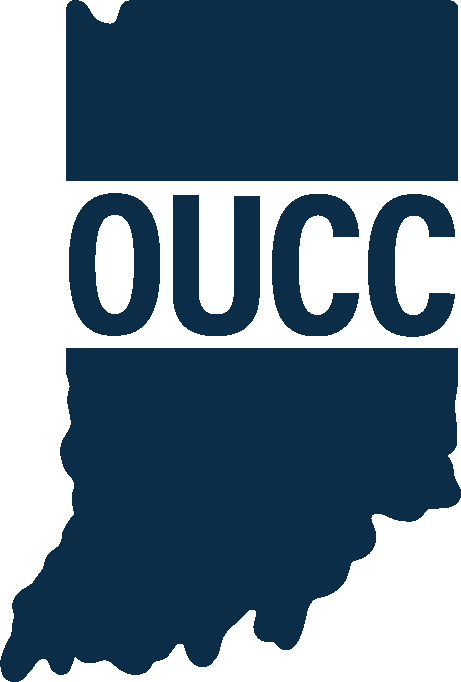
Quick Facts:
- Electric rates include a number of components, including costs for fuel, environmental compliance, regional transmission, and other factors.
- Monthly electric utility bills reflect these components and the customer’s usage.
- Budget billing and energy efficiency tools can help you manage electric bills year-round.
- Electricity Prices: The Basics
Electric utilities in Indiana generate most of their electricity at power plants that they own and operate. However, they may also purchase power in the competitive national wholesale market. Costs for coal, natural gas, and other fuels that are used at electric generation plants may vary based on market conditions, while power costs in the competitive wholesale market will vary from day to day based on supply and demand.
Important Note:
The information in this fact sheet applies only to electric utilities that are regulated by the Indiana Utility Regulatory Commission (IURC). These include 5 investor owned utilities and 9 municipal electric utilities. 67 municipal electric utilities and all Indiana Rural Electric Membership Cooperatives (REMCs) have withdrawn from IURC jurisdiction by following processes that are defined in Indiana law. Rates and charges for these utilities are determined solely at the local level and are not subject to OUCC review or IURC regulation. - What determines my monthly bill?
Usage – Driven largely by weather
Electric bills for most residential and small business consumers usually peak in the summer due to increased demand for air conditioning, although customers who use electricity for heat may see their highest bills during the winter. Monthly usage is measured in kilowatt hours (kWh).
Costs – Several components are included in your electric rates:
Base rates:
- Cover basic infrastructure costs, including operation and maintenance of utility-owned generation plants, transmission lines, substations and distribution infrastructure.
- Pay for employee salaries and other general business expenses.
- Can only be changed through a legal proceeding before the Indiana Utility Regulatory Commission (IURC), in which the Indiana Office of Utility Consumer Counselor (OUCC) represents customer interests.
- May comprise anywhere from 66 to 99 percent of an average residential customer's bill (not including taxes), depending on the consumer's utility. Investor owned electric utilities recover fuel costs and other specific costs, as outlined below, through periodic rate adjustments known as "trackers." (For more information, please see the IURC's Residential Bill Surveys.)
Fuel costs:
- Pay for the coal, natural gas, renewable energy and other sources from which your utility generates power.
- Can be passed through to customers on a dollar-for-dollar basis in compliance with Indiana law:
- Utilities may not profit on these pass-throughs.
- Utilities must receive IURC approval and OUCC review before passing these costs to consumers. These reviews are done quarterly, semi-annually or annually for individual utilities under the state’s Fuel Adjustment Clause (FAC) process.
Purchased power costs:
- Pay for recovery of electricity purchased on the competitive wholesale market.
- May be necessary if a utility’s generation is not sufficient to meet demand.
- May be recovered through the FAC process or through a separate “tracker,” which allows for incremental rate adjustments without changing the utility’s base rates. IURC approval and OUCC review are required.
Environmental compliance costs:
- Pay for federally mandated pollution control equipment at coal-fired generating facilities in Indiana.
- Federal rules require electric utilities to meet specific guidelines regarding sulfur dioxide (SO2), nitrogen oxide (NOx) and mercury emissions.
- Indiana law allows utilities to recover the costs of clean coal technology through rates following OUCC review and IURC approval.
- Proposed technology must reasonably comply with federal guidelines before being approved.
- Ongoing construction costs may be submitted, reviewed and approved for recovery through incremental rate adjustments twice each year.
- Adjustments are restricted to clean coal technology construction only.
Regional transmission costs:
- Pay for the costs of regional transmission operators (RTOs), which control flows for the power grid over large geographic areas.
- The RTO serving most Indiana electric utilities is the Midwest Independent Transmission System Operator (Midwest ISO), based in Carmel, Indiana.
- Midwest ISO manages the grid over portions of 15 states and a portion of Canada.
- Midwest ISO and other RTOs have been formed in recent years to help ensure a reliable transmission grid for all utilities and throughout larger regions.
- One major Indiana electric utility, Indiana-Michigan Power, is served by PJM Interconnection, based in Valley Forge, Pennsylvania.
- Are recovered through FAC or other scheduled filings that require IURC approval and OUCC review. Utilities are not allowed to profit on RTO cost pass-throughs.
Demand side management (DSM) programs:
- Allow consumers to voluntarily work with their utilities to modify their electrical usage during peak periods.
- Reduce overall expenses, reduce the possibility of blackouts, and encourage energy efficiency.
- Include efforts by large industrial customers and air conditioning direct load control programs for residential customers.
Taxes:
- The Indiana state sales tax of 7 percent applies to electric usage, regardless of your service provider.
- How can I manage my electric bill?
Energy efficiency
The OUCC’s “Reduce Your Summer Electric Bill” and “Reduce Your Winter Energy Bills” fact sheets offer tips that can help you use less electricity and save more money throughout the year.
Energy efficiency improvements – including new insulation, a programmable thermostat, and a variety of other options – will help pay for themselves. You may also qualify for state and federal income tax relief by making these investments.
Customers of several Indiana electric utilities can also receive bill credits by signing up for direct load control (DLC) programs. By installing small switches on participating customers’ central air conditioners, these programs allow utilities to better manage their power supplies on peak demand days. Customers who sign up experience little or no discomfort as their units are cycled for brief periods of time. More information is available from the OUCC’s “A Small Switch” fact sheet.
These fact sheets and all other OUCC publications are available at no charge on the
agency’s Website or by calling the agency toll-free at 1-888-441-2494.More detailed information on energy efficiency is available from the U.S. Department of Energy and the Alliance to Save Energy.
Budget bill
The OUCC encourages consumers to enroll in budget billing, which offers consistency from month to month and can help with managing energy bils year-round. Programs vary slightly among utilities but generally follow six basic steps (these same steps apply to natural gas utility budget billing programs):
1. Your electric usage and costs are estimated for a set period, usually a year or six months.
2. The estimate is then divided by the number of months in the budget period.
3. You pay the set monthly amount throughout the budget period.
4. Utilities may reserve the right to make a mid-term adjustment to budget billing based on market conditions, to help prevent unusually large increases at the end of the period.
5. When the budget period ends, the utility calculates the difference between how much power you have actually used and how much you paid for under the budget program.
6. You receive credits if you have overpaid or will be billed if you have underpaid. Any underpayment will usually be factored into the next budget period and spread out over time. - What if I have trouble paying my electric bill?
Arrange a payment plan
If you receive a bill that you may have difficulty paying, contact your utility immediately. Utilities will generally work with customers who face financial hardships, but the customer must:
1. Contact the utility as quickly as possible,
2. Follow through on any agreed payment arrangement, and
3. Immediately contact the utility regarding any changes that could affect the arrangement.Financial assistance
Qualifying households can receive winter heating and limited summer cooling assistance from the state’s Energy Assistance Program. More information is available by calling 1-800-382-9895, and a directory of LIHEAP intake offices by county is available by clicking here. Many utilities and township trustees also offer energy assistance.
Disconnection
Anyone who is receiving – or is eligible for and has applied for – state Energy Assistance Program funds may not have his or her electric or natural gas utility service disconnected between December 1 and March 15, under Indiana law. However, customers remain responsible for paying their bills and should contact their utilities immediately if they anticipate payment problems.
For answers to frequently asked questions about the moratorium, click here. The OUCC’s Utility Service Disconnection fact sheet also offers more information on customer rights and responsibilities.
7-11-2023
